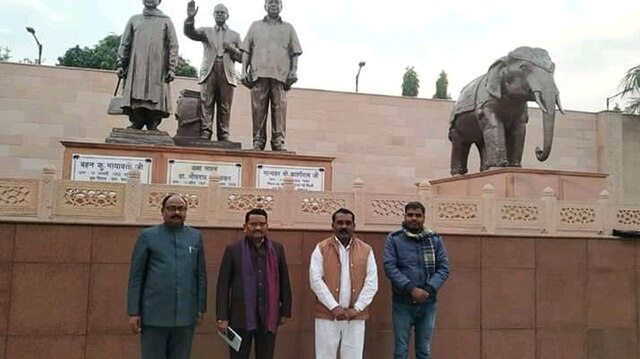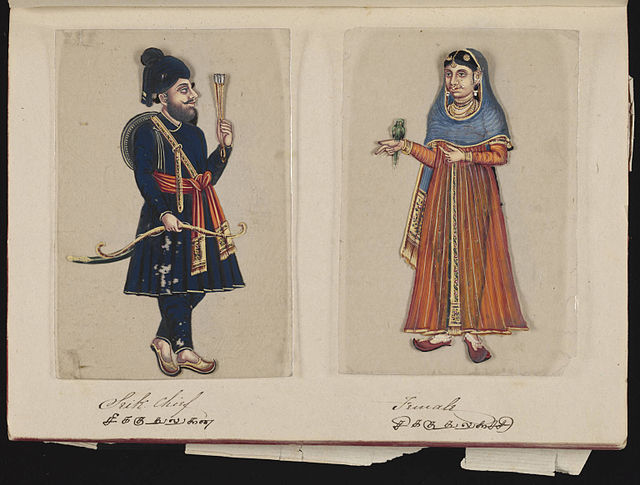Dalit, also some of them previously known as untouchables, is the lowest stratum of the castes in the Indian subcontinent. Dalits were excluded from the fourfold varna of the caste hierarchy and were seen as forming a fifth varna, also known by the name of Panchama. Several scholars have drawn parallels between Dalits and the Burakumin of Japan, the Baekjeong of Korea and the peasant class of the medieval European feudal system.
A group of Dalit women in 2021
A school of untouchables near Bangalore, by Lady Ottoline Morrell
Dalit leaders at Bahujan Samaj Party head office
A Sikh gurdwara in Smethwick. The majority of gurdwaras in Britain are caste-based and one can indirectly inquire about a person's caste based upon which gurdwara the person attends.
The caste system in India is the paradigmatic ethnographic instance of social classification based on castes. It has its origins in ancient India, and was transformed by various ruling elites in medieval, early-modern, and modern India, especially in the aftermath of the collapse of the Mughal Empire and the establishment of the British Raj. It is today the basis of affirmative action programmes in India as enforced through its constitution. The caste system consists of two different concepts, varna and jati, which may be regarded as different levels of analysis of this system.
Image: Seventy two Specimens of Castes in India (18)
Image: Seventy two Specimens of Castes in India (16)
Image: Seventy two Specimens of Castes in India (8)
Image: Seventy two Specimens of Castes in India (5)








